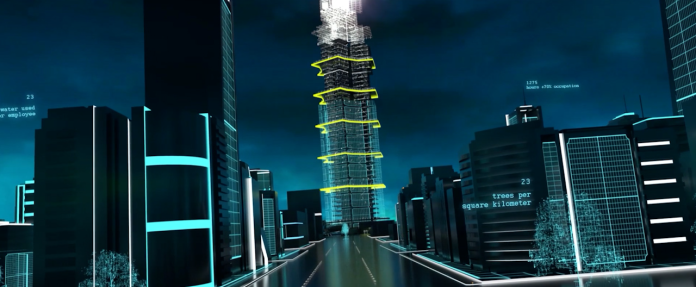How can the increasing range of technology being deployed in construction help to unlock sustainable building designs and meet the climate challenge? May Winfield, global director of commercial, legal and digital risks at Buro Happold, takes a look
We cannot ignore the construction industry’s role in the current climate emergency. Indeed, the industry is recognised as a major contributor to the climate crisis, with building and construction estimated to account for 40% of energy-related CO2 emissions. As we look to move the dial to create more sustainable designs, what tools can current technology offer us in this important journey?
As an organisation for whom both sustainability and technology are central tenets, the answer to this is something that Buro Happold has actively engaged in for some time.
What do we mean when we say “technology”?
In recent years, the construction industry has seen the introduction of an increasing number of technologies, together with their related processes. These include BIM, GIS, smart building technologies, modular construction and Design for Manufacturing and Assembly (DfMA), digital twins and, most recently, AI.
Such technologies are inevitably data-rich in both the volume of data they compile in a coherent way and/or the amount of data they process, or often both. There is an increasing ability and skillset to utilise a number of different technologies together to complement and enhance the results.
So how can these assist in achieving more sustainable designs?
The key to unlocking more sustainable designs and the decarbonisation challenge, as well as developing innovative solutions to achieving net zero carbon emissions, arguably lies in this increased ability to analyse and understand vast quantities of data that are derived from various sources.
This speed of understanding and assessment of alternative scenarios with real-time outcomes, better transparency and greater stakeholder collaboration and engagement can lead to more informed, evidence-based decision-making that optimises solutions and has a reduced risk of errors and waste.
One real-life example of this is the Buro Happold digital twins toolkit that was featured in the Centre for Digital Built Britain’s Digital Twin Toolkit document. To achieve improved understanding and engagement of stakeholders, immersive and dynamic interactions were used by streaming the toolkit’s data and insights to both standard 3D web mapping platform and Unreal gaming engine for multi-user, secure, confidential simulation and interrogation.
Incorporating a significant volume of real-world data supported intelligent selection and validation of domestic heat network solutions and increased the understanding of choices and tracking technologies to achieve net zero carbon in the projects.
As a further example, Buro Happold’s building performance dashboard provides important central reporting to model and measure energy data, such as energy consumption, operational carbon and embodied carbon. Such technology, which can be used by people in different regions of a diverse international business, enables powerfully uniform data collection, and analysis and, in turn, as a communication tool – facilitating the necessary organised progress to achieve Buro Happold’s sustainability aims and commitments, as set out in the annual Buro Happold Sustainability Report.
For the more technically minded readers, this dashboard is powered by the BHoM, a collaborative open-source tool that has also been used to create a lifecycle assessment toolkit, which seeks to quantify carbon emissions and other environmental impacts of a process through its various lifecycle stages. Such quantification can help early assessment of carbon and consequently inform design decisions to minimise potential environmental impact.
These brief examples provide a small snapshot of the wide possibilities available in harnessing technology to increase sustainability in designs. These examples have not even touched upon the numerous possibilities arising from using BIM in the design process and reducing waste by using Modern Methods of Construction and offsite manufacturing. The possibilities are endless, and the future is bright in using technology to create more sustainable designs. However, this will only be achieved if the industry and clients work together in the commitment to achieve these aims.

May Winfield
Global director of commercial, legal and digital risks
Buro Happold
may.winfield@BuroHappold.com
www.burohappold.com
Twitter
LinkedIn
YouTube
https://www.instagram.com/buro_happold/

















